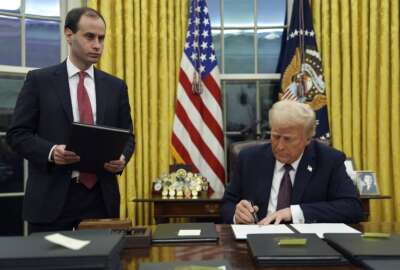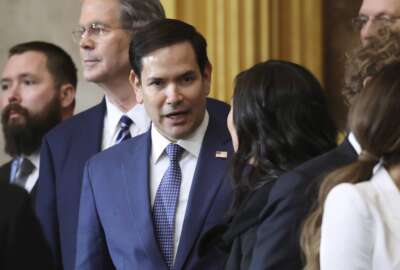Strategic Imperatives for CIOs
I really see five strategic imperatives for CIOs. The first is manage IT as a business. Funds are always required for big transformations. But yet, when you look at it, roughly 80% of federal IT spend goes to O&M. The other thing is making sure that you have accurate and good cost information for your services and products. Technology Business Management certainly can help in that area. Procurement, spend optimization to include licensing and rationalizing applications, freeing up funds for modernization. I think moving as much on-premise work to commercial cloud environments as you can is a good business investment. And then really take a look at her look at managed services. Everything is a service that's being offered out there.
Joseph Klimavicz
Managing Director, Federal CIO Advisory Practice, KPMG
Security and Agility in the Multi-Cloud Environment
Modernization does not equate to transformation. So I love all the talk about modernization. But transformation is actually more valuable than just modernization. Some of the other trends are data optimization and virtualization. We collect a lot of data in the government, but maybe only use it once. And then it is stored someplace, but nobody ever knows it exists, so we have to minimize dark data. Another trend is rapid software development, low code, no code, micro-services, artificial intelligence and machine learning. We have to lower the barrier to entry to bring products in. There's a lot of training that has to go into bringing real artificial intelligence.
Joseph Klimavicz
Managing Director, Federal CIO Advisory Practice, KPMG
Agency chief information officers face shifting priorities today more than ever before amid the coronavirus pandemic.
These technology executives are realizing the importance of not just IT modernization, but all the pieces to make these efforts success such as cloud, hybrid cloud, application rationalization and the use of the technology business management framework to better understand cost structures of IT.
Joe Klimavicz, the managing director of the federal CIO advisory practice at KPMG and the former Justice Department CIO, said five strategic imperatives emerged for technology leaders over the past few years.
They are:
- Manage IT as a business
- Automate, scale and embrace new technology
- Simplify IT for a consistent user experience
- Protect the environment, but maintain agility
- Leverage data as a strategic asset
“I think digital leaders are certainly investing heavily in the cloud. But lift-and-shift today is not enough. We need to think about the opportunities there. There’s the rehosting or lifting shifting model. There’s refactoring, which is minimal alteration of the application for the cloud. There’s rearchitecting. And that’s taking these monolithic applications that maybe have been around for 20 or 30 years, and rearchitecting them using microservices and containerizing them,” Klimavicz said on the Modern Government: How COVID-19 Changed the Course of Digital Transformation show sponsored by KPMG. “You can rebuild, essentially write new code as a cloud native application, and then replace with a more nimble solution. Clearly, lifting and shifting gets you saving. You can save you a lot of money, but it doesn’t give you the performance increase that you really need. So my take would be re architecting at the very least, or rebuilding.”
Klimavicz said getting the architecture and infrastructure right will open the door to achieving the goals under these imperatives.
“You want to build that trust into it as safeguards and as much as you can. I think you need to take a holistic view of risk, but understand that security in the cloud is a shared responsibility,” he said. “There’s obviously the cloud service provider, there’s also the mission owner and the cloud reseller. There’s the app developer, there’s the network and there’s the security operation center, that’s actually going to monitor 24/7 your workloads that are running in the cloud. I think the environment needs to be architected, implemented and operated with all the regulatory requirements in mind.”
Additionally as employees continue to work remotely, CIOs must take security capabilities like zero trust and identity and access management, end point and mobile application security and other similar concepts into account because the network perimeter is expanding, or even going away altogether.
“As you go to zero trust, you need a plan. For me, zero trust includes strong identity management, that’s very important,” he said. “You do to be able to collect the data at scale, across your entire cloud, in your on-premise environment. You need to collect it across users, applications, devices, infrastructure, software, defined networks are key for zero trust, and then advanced analytics to protect those assets and data and services. And you also need to build a cyber aware culture.”
Over the last six months or so during the coronavirus pandemic, many agencies accelerated these security and cloud initiatives. Now, Klimavicz said, agencies need to think about digital transformation, not just IT modernization.
“Modernization does not equate to transformation. So I love all the talk about modernization. But transformation is actually more valuable than just modernization,” he said. “Some of the other trends are data optimization and virtualization. We collect a lot of data in the government, but maybe only use it once. And then it is stored someplace, but nobody ever knows it exists, so we have to minimize dark data. Another trend is rapid software development, low code, no code, micro-services, artificial intelligence and machine learning. We have to lower the barrier to entry to bring products in. There’s a lot of training that has to go into bringing real artificial intelligence.”
Klimavicz said digital transformation success will come if applications are rationalized and in the cloud, and the workforce has the skillsets to deliver services.
“If you can pay extra attention to the workforce and take care of the workforce, and I extend that to the industry workforce as well, they’ll take care of you,” he said. “There’s a lot of accelerators, connectors that are already built out there, try to take advantage of them. Don’t reinvent the wheel, because if you can leverage what somebody else has already done, they will save you a lot of time in that modernization effort.”
Copyright
© 2025 Federal News Network. All rights reserved. This website is not intended for users located within the European Economic Area.








